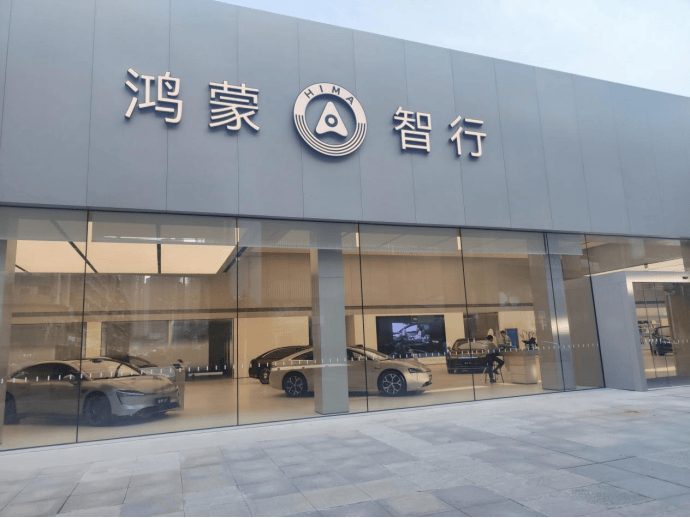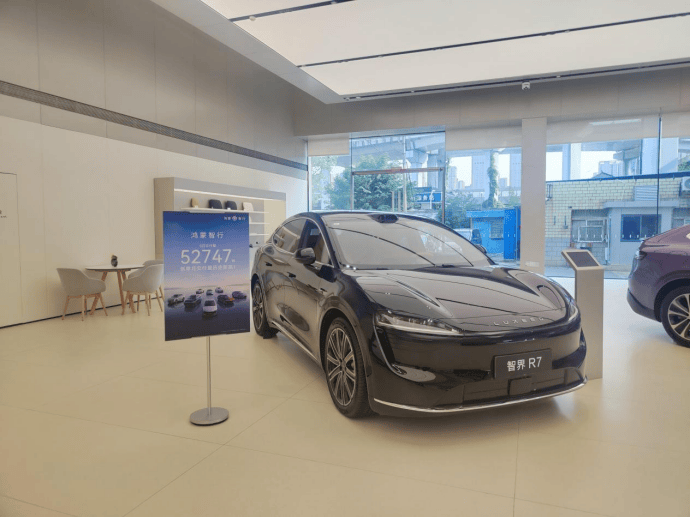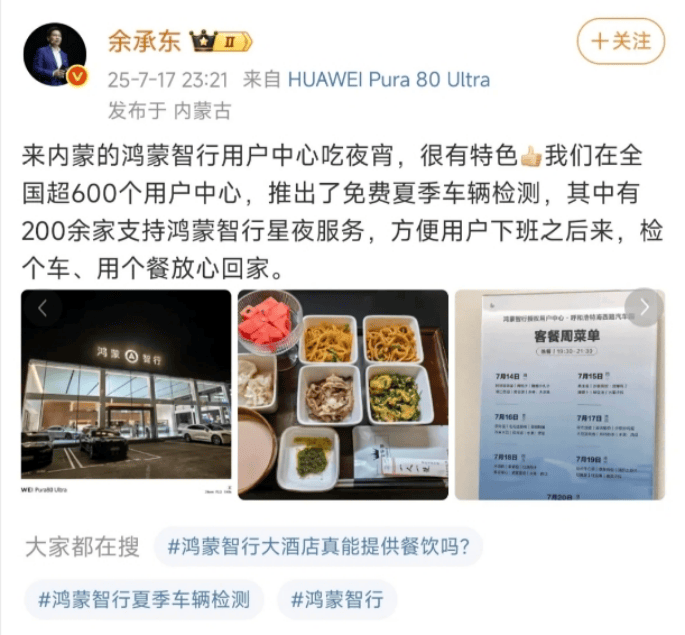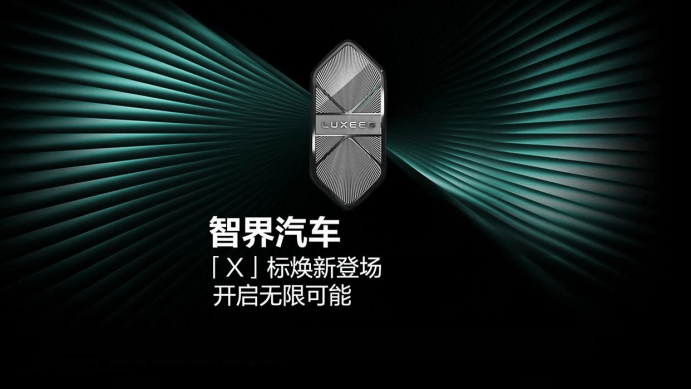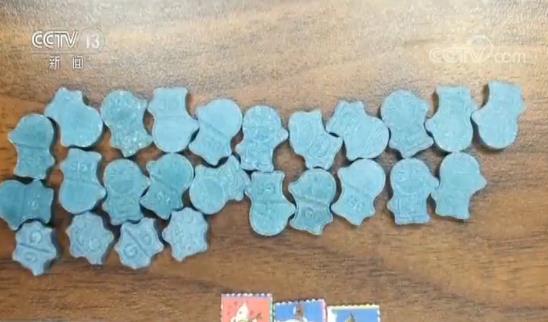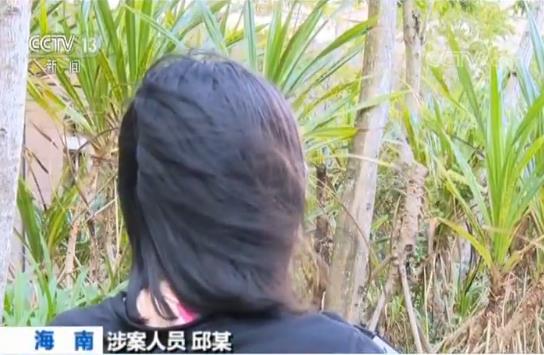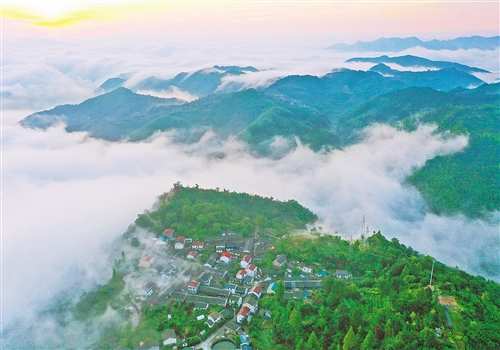[Introduction]
The Hall of Praying for the New Year in Tiantan Park is the place where emperors used to worship heaven. In this way, they pray for good weather and good harvests. Of course, the Hall of Praying for the New Year can’t predict the future, and offering sacrifices to heaven is just a feudal superstition. Today, a mathematician in Chinese Academy of Sciences plays the role of "prophet". What are they "divining"?
[explanation]
In 1999, more than 1,400 people attended the 15th World Congress of the International Logistics Association, and a paper on input-occupation-output technology and grain yield prediction in China won the only first prize for the progress of international operations research. With the highest accuracy, the fastest timeliness and great economic value in the world, he has attracted the attention of scientists and governments all over the world.
[Title]
Mathematicians’ Grain Prediction
[explanation]
In short, this paper is grain yield estimation. It is to predict the actual grain output by meteorological method, remote sensing technology or statistical dynamics before the crops are harvested.
Since 1980, at the end of April every year, the National Grain Output Forecasting Group, chaired by Xikang Chen, a researcher at the Institute of Mathematics of Chinese Academy of Sciences, has completed the forecast of the national grain output in that year. At the beginning of May, this report will be submitted to the main leaders of the central government and relevant departments of the central government, and it will become an important scientific basis for the state to formulate the grain policy for that year.
The growth and maturity of crops is a very complicated and changeable process, during which there are not only many unpredictable factors, but also complex interactions between various systems and the environment.
At present, the lead time of grain yield estimation in foreign countries is usually about 2 months, while that of grain yield estimation research group is more than half a year; The error of output estimation abroad is 5% ~ 10% of the actual output, and the average prediction error of the output estimation research group is 19% of the sampled actual cutting output. Moreover, in the past 23 years, it has been predicted that the grain abundance, average and sorry directions in each year are all correct.
[interview]
Our method is to use system comprehensive factor forecasting method, mathematical method and model to forecast. Its forecast can be longer, and now our forecast time is half a year earlier, that is, half a year before the grain harvest. What kind of concept is this? It’s just our ordinary grain. Its growing period is 140~150 days, that is, 4~5 months, so if you advance it by 6 months, that is, before the seeds are sown, I have already predicted its yield.
[explanation]
The forecasting equation of the grain yield estimation research group chaired by Xikang Chen comprehensively considers the interaction of natural factors, such as soil and meteorology, and socio-economic and technical factors, such as policies, prices, improved varieties and fertilizers.
This is one of the nonlinear prediction equations. So how practical is it?
[interview]
The most obvious performance here is in the import and export. If there is a crop failure this year, we should import food, but if you didn’t estimate it in advance, you didn’t import it as a result. From January to September, we found that our country had a crop failure, and then we went to the international market to buy food. Internationally and in the market, they also knew that China had a crop failure, and the price of food rose sharply at this time. Therefore, if we can’t predict it early, or if the prediction result is wrong, we will import and buy food.
In 2002, for example, the estimated output resulted in a grain shortage of 30 million tons. Because we knew this situation in advance, we imported wheat in the international market when the price was low in April and May. If you wait until the harvest in October and find that it is insufficient to buy, you will have to pay an extra $207.6 billion in foreign exchange. A report saved the country 171.6 billion yuan, thus alleviating the crisis on the table of ordinary people.
Accurate and timely yield estimation report gives us enough time to arrange grain production, storage and import, which makes us occupy a favorable position in international trade.
SETTING: Science and Education Center of Beijing TV Station
Broadcast: Beijing TV 3 "All-round Science and Technology" November 5, 2004
Second prize works, second prize works
The winner of the highest national science and technology award-Zhao Linlin of Wu Mengchao
[explanation]
At the National Science and Technology Awards Conference just held in 2006, Academician Wu Mengchao, a medical expert interviewed by Everyone, won the "National Highest Science and Technology Award". This is the first time that a medical scientist has won this honor since the establishment of the highest national science and technology award.
In the 1950s, the mortality rate of liver surgery in China was as high as 33%, but with the efforts of Academician Wu Mengchao, this figure quickly dropped to 84.8% in the 1960s and 1970s and 0.35% in the 1980s and 1990s. In the same period, the five-year survival rate of liver surgery in China has also increased from about 10% to 532% today. Today, let’s go into Wu Mengchao, a famous medical scientist, to review the creation process of this miracle.
Wu Mengchao: In 1956, I attended an academic conference, and Japanese experts were invited to the conference. After the conference, I once heard them say that the Japanese are crazy, saying that the current level of (liver surgery) in Japan is good, and liver resection can be done. Your level in China is still far behind, and it will take at least 20 or 30 years to reach our level. I am very angry when people say this. What’s so great about the Japanese? We must catch up with them!
[explanation]
The assertion of Japanese experts is not without foundation. In 1950s, hepatobiliary surgery was regarded as a "forbidden area" in the world. At that time, Japan was still in the forefront, but there was no separate liver surgery in China, and liver surgery was in a blank stage. At that time, 34-year-old Wu Mengchao was only the attending doctor of Changhai Hospital affiliated to the Second Military Medical University, and knew almost nothing about liver surgery. At that time, even his teacher, Qiu Fazu, known as the "father of surgery in China", did not have complicated liver surgery.
Interview with Qiu Fazu: At that time, liver surgery in the world had just begun, and China was not ready yet. The situation in the liver is very complicated, including biliary tract, vein, artery, blood coming in and blood coming out. In the past, liver surgery was considered as a restricted area, and doctors were afraid to operate.
[explanation]
The liver is one of the organs with the most abundant blood supply in human body, and it has dozens of functions such as metabolism, digestion, storage, detoxification and coagulation. With the development of medicine today, artificial heart, artificial lung and artificial kidney have been created, but it is still impossible to replace the complex function of liver with anything. Liver surgery often leads to the death of patients due to massive bleeding, and there are only a handful of successful operations in the world. In 1958, Changhai Hospital admitted the first case of liver cancer in its history. The main method of treating liver cancer was surgical resection. The hospital specially invited a famous surgical professor as the chief surgeon and Wu Mengchao as the assistant, but the patient also died on the operating table because of massive bleeding.
Moderator: What is the cause of this massive bleeding?
Wu Mengchao: I’m not familiar with this hepatobiliary anatomy. Therefore, there is no way to control this bleeding, and the blood seeps badly. At that time, the rescue technology was poor, and the patient quickly went into shock, and then he was rescued quickly. As a result, the patient died.
Moderator: At that time, when cutting this tumor, it was actually not clear what the internal structure of the liver was like.
Wu Mengchao: I don’t know. I’m not sure.
Moderator: That was the first major liver surgery you experienced. What kind of impression did you leave after that operation?
Wu Mengchao: At that time, I felt that there was a lot of bleeding during liver surgery. It seems that the blood vessels in the liver are very rich, and it is not easy to make this operation successful. If you want to do a good operation, you must be familiar with anatomy, which is what surgeons do. Therefore, if we want to develop a new subject, we must make clear the basis of organs.
[explanation]
To solve the problem of massive bleeding in liver surgery, the key is to find out the structure and vascular direction of the liver. However, in the 1950s, there was no unified and recognized anatomical way in the world. In order to understand the structure of the liver, Wu Mengchao learned after consulting a lot of data that the dissolved plastic was injected into the liver from blood vessels with a syringe, and after the surface tissue of the liver was corroded, the dense blood vessels could be exposed. Since 1958, Wu Mengchao and his assistants have been experimenting on hundreds of corpses, but they have never found a suitable plastic filler. In 1959, he overheard the news that China won the 25th World Table Tennis Championships on the radio, which immediately inspired him.
Wu Mengchao: On that day, we were sitting in the laboratory and thinking about this problem. It happened that the national sports delegation won the world championship of table tennis for the first time. At that time, there was a lot of publicity. It was a great honor for China to win the world championship. Everyone said table tennis. We thought at that time, isn’t table tennis plastic? So I bought a ping-pong ball immediately, cut it into pieces and soaked it in nitric acid. At first glance, it really dissolved, then I added pigment and mixed them together, so that it could be used for injection.
Moderator: At that time, your idea was to find out how the blood vessels in the liver are distributed.
Wu Mengchao: Yes, how is it distributed, how is it going, and where is the surface projected, so that you will know how to start when you operate.
Moderator: In fact, the idea you came up with was to solve the problem of massive bleeding when you first participated in the operation. Why did you bleed?
Wu Mengchao: Yes, it is to solve this problem.
[explanation]
These liver specimens are made of plastic used to make ping-pong, and the model reflects the direction and distribution of blood vessels and bile ducts in the liver in a three-dimensional and vivid way. In the past two years, after anatomical observation of more than 200 cases of liver corrosion specimens, in 1960, Wu Mengchao first put forward the "five lobes and four segments" anatomical theory of the liver, but this theory was not proved to be safe by surgery. Just this year, Changhai Hospital admitted a second case of liver cancer, and a malignant tumor was born on the right lobe of the liver. Two years ago, the shadow of surgical failure still exists. This time, the hospital organized a strong lineup and specially invited Zheng Baoqi, a famous surgeon, to be the chief surgeon. But just as the operation was about to begin, Zheng Baoqi gave the position of the chief surgeon to his assistant, Wu Mengchao.
Wu Mengchao: At the beginning of the operation, Director Zheng was invited to take the stage. Suddenly, Director Zheng said that I would be the chief surgeon and he would be the assistant. One of me was happy at that time, which was the trust of the director, but the second one was also timid and had a heavy responsibility.
Moderator: I think this moment is worth analyzing. Why did he tell you before the operation?
Wu Mengchao: The director trusted me very much at that time. In fact, the director focused on cultivating me. At that time, he thought that I had studied liver specimens for such a long time and should be familiar with the liver, so he said, "You do it and I’ll be your assistant."
Moderator: In fact, there is definitely a difference between doing anatomy and actually doing surgery.
Wu Mengchao: Of course, I have mastered these basic skills. I know where there are blood vessels, so I am at least a little confident in doing so.
Moderator: When you do it, do you do it completely according to the theory of "five leaves and four segments" that you summarized?
Wu Mengchao: Yes. It is done completely according to this theory.
[explanation]
After three hours of operation, Wu Mengchao successfully performed the first liver cancer resection in China. Three weeks later, this patient became the first liver cancer patient in the history of Changhai Hospital to walk out of the hospital healthily. After that, she lived for six years, which caused a great sensation in the medical field at that time. This case was later specially made into a science and education film, so that we can clearly see the scene of that year today. The anatomical theory of "five leaves and four segments" of the liver has become a classic method in the future, and it is still the theory that guides the largest number of liver operations in the world until today. After successfully completing the first liver cancer operation, Wu Mengchao found that the method of stopping bleeding in the liver was very dangerous. Because of the rich blood in the liver, the hilum of the liver has to be ligated to stop the inflow of blood during the operation, but once the liver is ischemic for too long, it is easy to cause liver necrosis, and a liver operation takes at least one hour. In order to prolong the time of blocking blood, the patient had to be soaked in ice water after general anesthesia, and then operated after the body temperature dropped to 32℃. Wu Mengchao has been trying to find a way to ensure the operation time without causing liver necrosis.
Wu Mengchao: One day, before I went on stage for surgery, when I was washing my hands, I suddenly got an inspiration. Look, the tap was turned off and the water stopped. The tap was turned on and the water came out again.
Moderator: This time, I found inspiration from the faucet.
Wu Mengchao: Yes, I told you that we can also set up a faucet, which blocks the blood vessels and then relaxes them. Isn’t that great? Let’s do animal experiments quickly. How long can this blocking time be? The experiment found that the dog didn’t die if it lasted for 20 minutes at a time, and the dog would die if it was blocked for 30 minutes, and the liver and gallbladder would be broken. So in this case, blocking and then releasing will not affect the patient’s liver for an hour.
Compere: Such a simple thing, why didn’t anyone do it before?
Wu Mengchao: We have been thinking hard for a long time.
Moderator: This is just like what you just said about using table tennis as plastic filler, and it is also an inspiration.
Wu Mengchao: I think this has something to do with my work. How do you think about it every day? When you think about it every day, you will think of something. Isn’t that how inspiration and gravity are discovered?
[explanation]
"Intermittent hilar occlusion at room temperature" is considered as the simplest and safest hemostasis method in surgery, and there are no complications. Until today, it has been widely used in major hospitals across the country and cited by authoritative medical textbooks. From anatomical theory to hemostasis technology, Wu Mengchao established a series of theoretical and practical foundations for liver surgery. In 1963, a very difficult case will challenge Wu Mengchao. One day, Wu Mengchao attended a consultation, and the diagnosis was very surprising. The cancerous part of the patient was in the middle lobe of the liver. The middle lobe of the liver is the place with the richest blood vessels in the liver, and all the important pipelines pass through it. It has always been called the forbidden area in the operation area, and there is no successful precedent abroad. After the diagnosis came out, the doctors present looked at each other, and Wu Mengchao decided to admit the patient to his own department.
Moderator: Why did you dare to take this operation at that time? No one else dares to answer it. How dare you?
Wu Mengchao: Because I am familiar with the anatomy of the liver, I think it can be done. Of course, there are risks. What are the risks? Everyone’s blood vessels sometimes mutate, and sometimes they don’t develop according to the normal (anatomy). If you perform an operation under such a mutation, the operation may fail. (This is) there are errors, and some operations have not found massive bleeding. Another middle blood vessel near the liver is rich, and many blood vessels are related. If it is not good, there may be infection. A massive hemorrhage, a liver necrosis, is possible. So, worry is worry, of course.
Moderator: I am worried, but how did I make up my mind?
Wu Mengchao: Making up your mind is to solve problems for patients. What should I do here? What should I do if I have accepted this task? You can’t just leave it alone. That’s what I am. Therefore, since this operation is to relieve the patient’s pain, I bravely undertook it.
[explanation]
In order to do this operation, Wu Mengchao and his assistant soak in the laboratory every day and do experiments on more than 30 animals. After two months of preparation, Wu Mengchao went on the operating table.
Moderator: Have you considered "in case the operation I received fails"?
Wu Mengchao: Of course, you should also consider yourself. As a surgeon, every operation will (go to) consider the result. As a result, on the whole, it is not good for patients to think too much. We should tell ourselves that I have done my duty, and I have done everything I can, and I have done my job at home. It is really not good, and there are still problems in the end. Then I have done my duty.
[explanation]
It took Wu Mengchao six hours to cut off the middle lobe of the liver with the tumor, and then carefully sewed up the liver on both sides. Once again, he successfully performed the first complete hepatectomy in the world, which solved the major problems in the history of liver surgery in the world. Soon after, he had three consecutive cases of middle lobe resection, and all of them were successful, which indicated that the technical system of liver surgery initiated by Wu Mengchao had matured, and in the 1960s, it promoted the general development of liver cancer resection in China, which reduced the mortality rate of liver surgery in China from 33% in the 1950s to 483% in the 1960s and 1970s.
Interview with Qiu Fazu: We have too many patients with hepatitis B and too many patients with hepatitis C. When cirrhosis develops to a certain extent, it will become liver cancer. Many liver cancers are still very dangerous. Wouldn’t it be great if they could be removed? Early detection and early treatment, so Professor Wu has done a lot of work in this field, and should be one of the founders and pioneers in China and internationally.
Life experience
[explanation]
Wu Mengchao was born in 1922 in the rural area of Minqing, Fujian. Due to the pressure of life, his father went to Nanyang to work and earn money shortly after his birth. When he was 5 years old, he followed his mother to Malaysia and defected to his father. There, he helped his father cut rubber while reading. After graduating from junior high school, there was no Chinese high school in Malaysia at that time, and Wu Mengchao didn’t want to read textbooks compiled by foreigners. In 1939, at the age of 17, he decided to return to China by boat after consulting with several fellow students. On the way, they had to pass through Saigon, a French colony at that time. When they passed the visa, because they were yellow, Wu Mengchao had no right to sign like a white man and had to press his handprint in humiliation.
Wu Mengchao: At that time, the French bullied us, which left a deep impression from childhood. At the time of visa application, when it was my turn and several of my classmates asked us to press our handprints, we all saw that several foreigners in front had signed them, but we were all very angry at being forced to press our handprints. Pressing our handprints was just like signing the indenture, and we always felt it was an insult. I said, we can write English as well as Chinese. Why should we press our fingerprints? They said, "No, you are yellow people, and yellow people are the sick man of East Asia!" " I get angry when I hear this, which is an insult to us. It is not enough to negotiate with him.
Moderator: I heard that you are still very angry about fingerprinting.
Wu Mengchao: Yes, I don’t have to press my fingerprints to go to America. I told you I wouldn’t go.
Moderator: What if they invite you to attend an academic conference?
Wu Mengchao: No academic conference. Don’t go if you want to press your fingerprints.
[explanation]
After returning from Malaysia, Wu Mengchao was admitted to Tongji Medical College and wanted to be a surgeon. However, when he was assigned for graduation, he was rejected by the hospital because of his height of 1.62 meters.
Wu Mengchao: A teacher at the school said that you should stay in pediatrics. It’s settled. You did well in pediatrics, with 95 points in pediatrics. I said I didn’t want to be a pediatrician. My personality is not good. Can I change my surgery? He said that your score of 65 in the surgical exam was too low, so I didn’t look at your size. As soon as I heard it, what happened to my stature? I was so angry at that time. That (teacher) honestly said, "No, not surgery." I started to run. Before I left, I turned around and said, "I’ll tell you, I have to do surgery." I want to do surgery with all my heart. I think I am confident in my hands when doing surgery, and I think surgery is easier to get results, so I think I want to do surgery.
[explanation]
Just when Wu Mengchao refused to assign, it happened that Changhai Hospital was recruiting, and Wu Mengchao finally became a surgeon as he wished. From ignorance of liver surgery to breaking the forbidden area of liver surgery, it took Wu Mengchao only four years. He successfully performed several difficult operations, which made him reach the first brilliant peak of his life at the age of 41. In 1963, Shanghai Science Education Film Studio specially bought imported films and filmed the color documentary March to Hepatobiliary Surgery for Wu Mengchao and his assistant.
[explanation]
就在这部影片拍摄后的三年,这个片子又成了“文化大革命”时批斗吴孟超的证据。当时他从副教授降为住院医生,被下放到陕西韩城农村。但吴孟超始终没有放下手术刀,没多久他就成了当地远近闻名的大医生,求诊的患者络绎不绝,甚至有从外省远道而来的。1974年,安徽农民陆本海慕名而来,他远远看上去像十月怀胎的孕妇,经检查被确认是一个罕见的特大肝海绵状血管瘤。此前他被多家医院拒之门外,有的医院打开腹腔之后被巨大的肿瘤吓得又把肚子缝了起来。
主持人:做这个手术难在什么地方?
吴孟超:难的地方一个是肿瘤大;第二个是肿瘤周围粘连,分离时容易大出血;还有一个就是怕病人出现异常问题。
主持人:当时打开腹腔的时候,您看到的这个血管瘤是什么情况?
吴孟超:很大。这么大的血管瘤还从来没碰到过。我看还有一部分正常的肝,正常的肝还可以保留。做下来以后,马上把这个瘤子带血一起称一称,18公斤重,他的体重一下子减轻了18公斤,做完了以后,大家高兴得不得了。然后我们就守着这个病房,我记得我是守了三四天。
Moderator: It is to ensure that there is no problem with this patient.
Wu Mengchao: Alas. The operation was so successful that it was immediately published in Shaanxi Daily.
[explanation]
Shaanxi Daily published a long newsletter "A Song of Praise for Chairman Mao’s Revolutionary Health Route", and the tumor that Wu Mengchao spent 12 hours cutting was described as "the relatives’ People’s Liberation Army removed a mountain that was weighed down by the revisionist health route-a 36-catty liver hemangioma". In the report full of slogans, only one place mentioned the name of Wu Mengchao, the head of the operation team. This operation has created a miracle in the world medical field. Not only is the tumor the largest hemangioma reported in the international literature so far, but Lu Benhai also has the longest survival time after liver cancer surgery, and he has lived healthily to this day. He was working in the field when a reporter paid a return visit in the 1990s. On Wu Mengchao’s 70th birthday, he also rushed to Shanghai to celebrate his birthday.
[explanation]
Lu Benhai’s case made Wu Mengchao famous, and various difficult cases kept finding him. In 1983, the hospital admitted a 4-month-old baby girl with a tumor on her liver. Previously, the baby’s surgery was neglected in the hospital.
Wu Mengchao: The difficulty of a baby is different from that of an adult. If you look at the size of its liver, for example, the tumor grows very big, and this adult will count as well. So where is the difficulty of small children (surgery)? People are relatively small, have poor tolerance and are at greater risk.
[explanation]
Wu Mengchao operated on the baby himself. Five hours later, he cut off a tumor weighing 600 grams from the baby, which was bigger than the baby’s head. The next day, the Associated Press (Associated Press) published a special banner, reporting that China successfully performed the first huge tumor resection for a baby, which once again shocked the world medical community.
Wu Mengchao: Because I’m bold in surgery. Although it’s difficult, I have to check everything I can be sure of, and I have to check it myself in advance.
[explanation]
After the operation, the baby girl was discharged from the hospital healthily. When "Everyone" came to Shanghai for an interview in August, 2004, she met the grown-up baby girl-Zhu Kena, who is now a nurse and works in a hospital in Wu Mengchao. Whenever I think of the desperate situation described by my parents, Zhu Kena still can’t help crying.
Zhu Kena: Because at that time, my parents told me that basically all hospitals have been pushed out. They said that you should raise another one, that is, all hospitals have been pushed out.
[explanation]
Jukona knew Wu Mengchao’s name from her parents when she was very young.
Zhu Kena: I just applied for a nurse in the senior high school entrance examination that year. Why? Because I think my own life was saved by others, I think I should do something for others, too? What I want to say to Wu most is, thank you for giving me another life, another life, and giving me another chance to be born again. Thank you very much.
[explanation]
After the reform and opening-up, a series of techniques and theories of hepatobiliary surgery initiated by Wu Mengchao have been written into textbooks, and have become classic methods, which have been used to this day, even often cited by foreign scholars, and his reputation in the international medical community has been constantly improved. In 1986, a foreign film crew made a special trip to the hospital where Wu Mengchao was located, and filmed the whole process of his tumor resection without pulling, so as to study his extraordinary medical skills. This film crew is from Japan. At this time, China’s liver surgery technology has been in the forefront of the world. James Walliams, an internationally renowned liver surgeon and tenured professor at the University of Chicago, called Wu Mengchao "the most experienced liver surgeon and clinical scientist in the 20th century" and "one of the most outstanding figures in the field of surgery".
[explanation]
In 1996, 74-year-old Wu Mengchao founded the largest specialized hospital of liver surgery in the world-Shanghai Oriental Hepatobiliary Surgery Hospital. As a rule, surgeons usually choose the right time to seal their knives to maintain their reputation, but Wu Mengchao, 83, has to undergo three operations every day as long as he doesn’t travel. At 9: 00 am on December 5, 2005, Wu Lao, who had just finished the meeting, hurried to the operating room 6 to have a pancreatic cancer resection.
Wu Mengchao: Today’s operation is big, and it is estimated that it will last until 2 pm. I can’t have lunch.
[explanation]
Every operation, Wu Mengchao, who is short, stood on this small stool. Wu Mengchao’s indomitable character not only made him become a surgeon as he wished, but also made him break the tradition many times and turn the impossible into reality in the eyes of ordinary people. Wu Lao’s operation lasted for about an hour. The liver cancer resection in No.3 operating room had to be invited to Wu Lao because the patient’s abdominal adhesion was too severe. After explaining the operation steps in detail, Wu Lao came to the No.3 operating room.
[explanation]
Wu Lao has a unique skill in surgery. When he was separating tumors, he saw that his hands were comfortable in the abdominal cavity, and often the tumors could be completely separated without a knife and a cut. Sure enough, in less than an hour, a tumor with a diameter of 18 cm (cm) was separated by Wu Lao and cut off.
Moderator: If this liver has a tumor, can you feel it without looking?
Wu Mengchao: I can definitely feel it. It feels different. I have taught many students this skill, but many students can’t learn it. Because this is an experience, I have to experience it myself. Sometimes I do liver tissue separation. I know that there are blood vessels in this place, so I will divide them slowly. When there is no place, I can boldly divide them by hand.
Moderator: Divide by hand, without a knife?
Wu Mengchao: No knife. Knowing that there are big blood vessels in this place, I carefully touched it and touched it to see if it felt different. This is the feel.
Compere: Is it in actual operation that many places can’t be seen?
Wu Mengchao: I can’t see it in some places.
Moderator: At this time, for example, behind the liver, do you have to reach in?
Wu Mengchao: Just reach in and separate.
Moderator: Since when, do you remember, and how many operations you have performed, your hands have a very dexterous feel?
Wu Mengchao: I’m quite handy. I’m not bragging about this. I’m confident. Why, when I was a child, I cut rubber very well, and I knitted baskets well. Later, when I was studying and doing surgery, my hand was generally evaluated as good.
[explanation]
At about 4 pm on December 5, 2005, Wu Lao began his rounds. As the head of the first hospital, he has to deal with administrative affairs from 8 o’clock in the morning, operate at 9 o’clock, and then take the young doctor to make rounds after the operation at 3 or 4 o’clock in the afternoon. Seeing that some cases were not standardized, Wu Lao said angrily: "Who wrote it? Ask him if he wants to be a doctor? " Wu Lao’s famous director makes many people afraid. He is very strict with doctors and always thinks of patients. In August 2004, when "Everyone" was filmed in Shanghai, we accidentally filmed a paragraph. A young doctor originally asked Wu Lao to help him look at the patients he had operated on, but he was criticized by Wu Lao for his medication.
Interview with students in Wu Mengchao: Mr. Wu pays the accounts for patients. For example, some surgical methods are very troublesome, but they can save the cost of equipment for patients. Mr. Wu will definitely do it by hand, preferring to be a little troublesome and tired by himself.
[explanation]
Although strict with young doctors, Wu Lao spared no effort to train surgical talents and provide them with various opportunities. In 2001, he set up the "Wu Mengchao Hepatobiliary Surgery Medical Fund" with 300,000 yuan from his personal savings and 4 million yuan from all walks of life. This is the first special fund in the field of liver surgery in China. At present, the fund has developed into the "Shanghai Wu Mengchao Medical Science and Technology Foundation", with a total fund of 10 million yuan, which is mainly used to reward outstanding doctors who have made contributions to liver surgery at home and abroad. Wu Lao also talked about how to be a good doctor many times in the interview.
Wu Mengchao: Last time I met a girl in Wuhan, she had a 45kg tumor. I didn’t even accept her when I saw her in Beijing. The girl was only 21 years old. At first, she thought she had gained weight, so she tried hard to lose weight by exercising. I didn’t know there was a tumor on her liver. Her mother knelt down when she came, and as a result, she had no money. I said we will give you a good look, don’t worry. Later, the tumor was cut, weighing 45 kilograms, and (I) sent a professional group to care for it. After the patient recovered, her mother came running, and the family came running. When they saw me, they knelt down. I couldn’t stand it. I am glad to say that you are well. As doctors, we hope that patients will recover well.
Moderator: Is it also such a kind of motivation that you are still willing to have surgery and do a lot of things for patients today?
Wu Mengchao: There is also such motivation, but to be honest, my personal experience has two aspects: one is that I am a doctor, and the doctor’s duty is to cure diseases and save lives; The second one, there are many patients who make me feel very sympathetic now. There are many advertisements now (some patients believe in advertisements), and some patients sometimes spend a lot of money, which seems to be not good. Finally, when I showed it to him, I found that all the money was wasted. There are many such patients, which is very pitiful.
[explanation]
The name Qiu Fazu was mentioned the most by Wu Mengchao in his three interviews with Everybody, and he was most grateful to him. In 1943, Wu Mengchao was admitted to Tongji Medical College, and Qiu Fazu was his teacher. After seeing the teacher’s superb medical skills with his own eyes, he made up his mind to be a surgeon. In 1958, under the guidance of Qiu Fazu, Wu Mengchao took the blank hepatobiliary surgery as his development direction. In the past 50 years, Wu Mengchao has always maintained the friendship between teachers and students. When they meet together, Wu Mengchao always follows the teacher, and when eating, Wu always helps Qiu Lao to choose a buffet. Two medical doctors who have had a far-reaching influence on China’s surgery are interpreting a much-told story in China medical field.
Wu Mengchao: The teacher always writes back in person, so I can’t. Some letters are sent back by the secretary. The teacher always writes back in person, and the work is neat.
[explanation]
In 1996, Wu Mengchao was awarded the title of "Model Physician" by the Central Military Commission, and Wu Mengchao specially invited Qiu Fazu to the rostrum.
Qiu Fazu: At that time, we were sitting on the podium, and I was the only one wearing a suit. The others were generals. There were more than 1,000 people attending the meeting, all of whom were the People’s Liberation Army. Finally, when I was introduced, I said that this was Wu Mengchao’s teacher, and the people below applauded. This is the pride of being a teacher.
Wu Mengchao: It should be said that as a student, I always respect my teacher. I can do it today because my teacher keeps guiding me. My teacher is very kind to me and treats me like a son. We talk about everything. I will tell him what I think and what I do well. He knows that we have to talk on the phone once a week now.
Qiu Fazu: He is very sincere. He tells me everything. I always say everything. I care about my heart. When two people are together, they are the same.
[explanation]
On November 20, 2005, the column "Everyone" organized a large-scale public welfare activity "2005 Medical Everyone Campus Tour". Qiu Lao and Wu Lao accepted the invitation gladly after learning about it. In the afternoon after the first lecture in Beijing, Wu Lao hurried back to Shanghai by plane, and the office meeting and surgery were waiting for him the next day. In the national lecture tour of "Medical Masters" in December, Mr. Wu took time out of his busy schedule and went to Wuhan, Shanghai and other medical colleges to discuss with young students. He hoped that his life-long medical experience would help future doctors.
(Moderator: Qu Xiangdong)
Broadcast: CCTV’s "Everyone" column on January 10th and 15th, 2006.
